Travel Tips
UNESCO World Heritages Sites & History of Malta
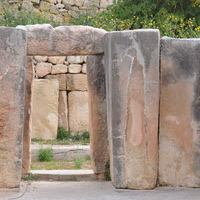 In the latest edition of her Q&A series with notable travelers and industry insiders, guest blogger Meg Pier spoke with Dr. Reuben Grima, archaeologist and senior curator of the UNESCO World Heritage sites managed by Heritage Malta.
In the latest edition of her Q&A series with notable travelers and industry insiders, guest blogger Meg Pier spoke with Dr. Reuben Grima, archaeologist and senior curator of the UNESCO World Heritage sites managed by Heritage Malta.
I met Dr. Reuben Grima in the midst of another busy day at the office—the “office” being prehistoric ruins on Malta’s rugged, southern coast.
While making our way down a path from the megalithic temple of Hagar Qim to the neighboring site of Mnajdra, Reuben touched on themes as relevant today as they were then: identity, sense of place, community, ritual, power, awe, and connection.
Meg Pier: Can you describe Heritage Malta’s mission and your role as senior curator?
Reuben Grima: Heritage Malta’s mission is the preservation and enjoyment of the cultural heritage resources entrusted to it, which include the principal national museums, collections and archaeological sites in the country. My role as senior curator of prehistoric sites is to, together with a team of very dedicated colleagues, help deliver this mission on the prehistoric temple sites as well as the Saflieni Hypogeum.
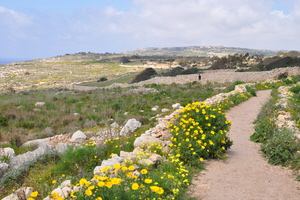 MP: What drew you to a career in archaeology and was Malta’s wealth of history a factor?
MP: What drew you to a career in archaeology and was Malta’s wealth of history a factor?
RG: Definitely. You don’t need to go far looking for archaeology in Malta, you stumble over it every time you go for a walk. As far back as I can remember, exploring the valley that ran past our home in Mosta, the village of my birth, we would as children often discover and explore some cave, rock-cut tomb or ruin. Even then, we were somehow aware that these formed part of a much greater story, which I was curious to learn more about.
MP: Malta has the distinction of being the site of some of the world’s oldest megalithic structures. Why do you think that is?
RG: There is a school of thought that as islanders, the people were more introverted, and, as a result, began to get more original. That societies that were in frequent communication with others contributed to a sameness, whereas being different is a reflection of not being in touch with other areas through travel.
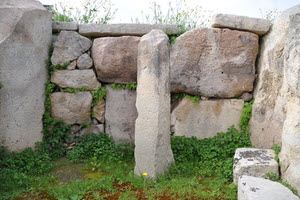 Malta lies on the fringe of Europe, a short crossing from Sicily, which is itself so large that, for most intents and purposes, it may be considered an extension of the continental landmass. In the Neolithic, it may be suggested that Malta was both remote and exotic, but also well-connected and well-known. The very fact that its inhabitants lived on a small island set the stage for them to create a very distinct identity, one in which megalithic architecture was to play an important part.
Malta lies on the fringe of Europe, a short crossing from Sicily, which is itself so large that, for most intents and purposes, it may be considered an extension of the continental landmass. In the Neolithic, it may be suggested that Malta was both remote and exotic, but also well-connected and well-known. The very fact that its inhabitants lived on a small island set the stage for them to create a very distinct identity, one in which megalithic architecture was to play an important part.
MP: Why or how did early man choose the particular sites selected for the temples?
Learn more about European travel here.
RG: Across more than 30 sites of the same period in Malta and Gozo, there are the same characteristics: access to the sea, fresh water springs, and agricultural land. The coastal shelf at Hagar Qim permits embarkation—the closest megalithic structure is located at the next such accessible point 10 kilometers away.
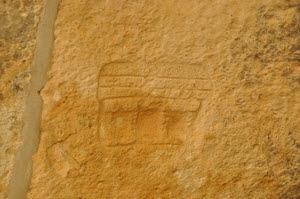 Because they had no beasts of burden, if they wanted to carry a heavy object to a neighboring community, it was easier for them to carry a load by boat than carry it over land. The most favorable areas for agricultural exploitation were located in more level areas. Steeper slopes, on the other hand, require the construction of terrace walls, which is extremely labor-intensive. They looked for land that was reasonably flat, so that terracing wasn’t necessary, and preferably south-facing slopes, which get more sunlight, as well as shelter from the wind.
Because they had no beasts of burden, if they wanted to carry a heavy object to a neighboring community, it was easier for them to carry a load by boat than carry it over land. The most favorable areas for agricultural exploitation were located in more level areas. Steeper slopes, on the other hand, require the construction of terrace walls, which is extremely labor-intensive. They looked for land that was reasonably flat, so that terracing wasn’t necessary, and preferably south-facing slopes, which get more sunlight, as well as shelter from the wind.
[The village of] Tarxien, meanwhile, although today surrounded by modern buildings, is located close to the Grand Harbour. In fact, the reason that it has been surrounded by conurbation is fundamentally the same reason that it was built at this location in the first place – proximity to one of the best natural harbors in the Mediterranean, which has been central to the story of human exploitation of the Maltese archipelago throughout the last 7000 years.
Check out more Hidden Travel Hotspots: European Micro-States.
MP: The sites are all referred to as temples—what exactly does that mean?
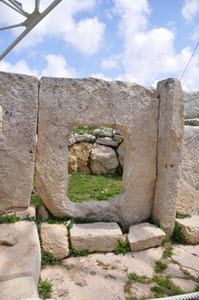 RG: When the word “temple” is used, people think of it in the modern sense, as a church or a mosque, which we think of nowadays as very separate from other institutions such as the bank, parliament, stockmarket, or nightclub. Such a distinct separation of these areas of activity is highly unlikely in the Neolithic world. The buildings were at the very heart of daily existence, not some place that was visited once or twice a year.
RG: When the word “temple” is used, people think of it in the modern sense, as a church or a mosque, which we think of nowadays as very separate from other institutions such as the bank, parliament, stockmarket, or nightclub. Such a distinct separation of these areas of activity is highly unlikely in the Neolithic world. The buildings were at the very heart of daily existence, not some place that was visited once or twice a year.
MP: Are you and/or your colleagues able to discern any specific spiritual practices that were engaged in at any of the temple sites, and whether those practices changed or evolved over time?
RG: The buildings we call temples do appear to be places for the practice of religious beliefs. There is evidence of animal sacrifice or ritual feasting. They appear to embody elaborate belief systems about people’s place in the world and in the cosmos. As colleagues have argued, they also show an increasing preoccupation with controlling access into the deeper parts of the structures, which suggests there may have been ritual specialists developing increasingly complex and exclusive rituals to maintain their status and importance in society.
Explore rituals, festivals and culture with our Cultural Immersion section.
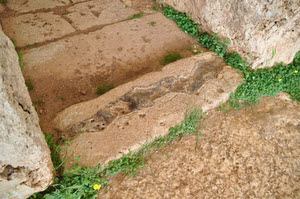 MP: What does the actual architecture of these structures tell you?
MP: What does the actual architecture of these structures tell you?
RG: The buildings themselves are designed very much with an eye to fulfilling societal needs—performing rituals in a very dramatic way, giving the illusion of control, creating power structures. A dark band snakes across the stone threshold of the South Temple at Mnajdra. This is calcite formed naturally by water deposits over long periods of time. What makes it very significant is that the temple builders carefully chose and cut this threshold slab to achieve this effect, almost certainly intended to give greater importance to the doorway, and to heighten the symbolic significance of crossing this threshold.
MP: Can you describe the Malta “fat ladies” and their significance?
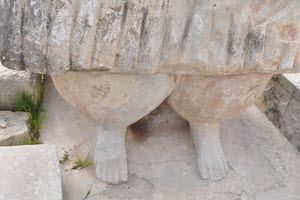 RG: A very varied group of extraordinarily beautiful statues and statuettes of human form have come down to us from the period of the temple builders. Some are made of baked clay, others of stone. They range in height from a few millimeters to some two meters. We do not know who they represent, indeed, the many different statues and statuettes that have come down to us may represent a range of divinities, ancestors, leaders or mythical figures.
RG: A very varied group of extraordinarily beautiful statues and statuettes of human form have come down to us from the period of the temple builders. Some are made of baked clay, others of stone. They range in height from a few millimeters to some two meters. We do not know who they represent, indeed, the many different statues and statuettes that have come down to us may represent a range of divinities, ancestors, leaders or mythical figures.
MP: In a general sense, what do you think humanity can learn from archaeology?
Don’t miss our section on museum experiences.
RG: Let’s begin by attempting a definition of archaeology. One possible definition, which of course not everyone will agree with, is that it is the examination of remains that form part of our present environment, and making sense of these by constructing narratives of past human endeavor.
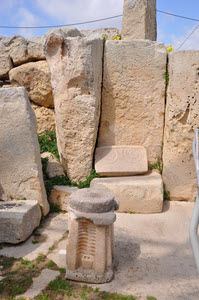 If we accept this definition, it can be argued that archaeology is a very widespread line of inquiry that is attested in some shape or form in a wide range of societies across time.
If we accept this definition, it can be argued that archaeology is a very widespread line of inquiry that is attested in some shape or form in a wide range of societies across time.
Archaeology in this sense is part of our material engagement with the world that we live in, indispensable to anyone who wishes to understand their environment, and the ever-shifting interaction between people and that environment.
MP: Based on what you’ve learned during your career to date, do you have any observations about whether man’s desire to travel is innate, apart from meeting basic needs such as food and shelter?
RG: Your question reminds me of a story I had heard from a Scottish archaeologist colleague, about an old man he met who lived on a tiny island, which had one road and two small clusters of houses about a kilometer or two apart. This man had lived all his life perfectly happily on one side of the island, without ever feeling the need or the inclination to walk the short distance to the other. I’ve come across several similar stories since, which goes to show that the desire to travel is very much a cultural construct, which may vary immensely from one situation to the next.
Traveling to Malta? Stop by Italy & Greece on your way.
MP: Has your career in archeology led you to observe any particular enduring truths about the human condition or society that appear not to have changed since the era in which Malta’s temples were built?
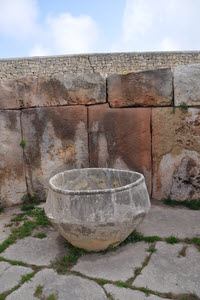 RG: Working on a small island has made me acutely aware of two enduring truths. One is that creative endeavor may produce great marvels out of very frugal resources. Another is that the delicate balance that permits sustainable exploitation of those frugal resources is easily upset, with drastic consequences.
RG: Working on a small island has made me acutely aware of two enduring truths. One is that creative endeavor may produce great marvels out of very frugal resources. Another is that the delicate balance that permits sustainable exploitation of those frugal resources is easily upset, with drastic consequences.
MP: Can you describe a moment or a discovery in which you felt a real sense of connection to the ancient ancestors who constructed one of Malta’s temples?
RG: Every time we stand in the architectural volumes of what remains of the megalithic temples, every time we encounter one of their extraordinary statuettes, we have the privilege of being allowed to engage with a way of being that flourished more than 5,000 years ago.
MP: How important do you think understanding the past is to creating a better future?
RG: To my mind, its usefulness in this respect is indisputable, for a number of reasons: appreciation of the inspiring record of human achievement; awareness of the many cautionary tales and lessons that may be gleaned from past failed experiments; sensitivity to the delicate balance between people and their environment, the wisdom of sustainable practices that successfully managed this balance, and the dire long-term consequences of shortsightedness in this respect.
For more information on Malta and its Heritage Sites, visit:
www.visitmalta.com (Malta Tourism) and https://whc.unesco.org/en/statesparties/mt (Malta World Heritage sites)
Text and photos by Meg Pier. To read more from this interview, visit Meg’s Web site, www.viewfromthepier.com.
Related links on PeterGreenberg.com:












